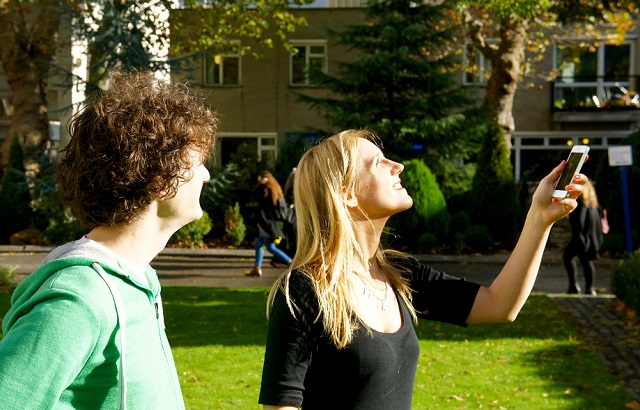QMUL scientist creates automatic birdsong recognition app
Warblr is an app is based on technology developed at QMUL and the prototype was developed with an Innovation Fund grant.

Dr Dan Stowell, an EPSRC Research Fellow in QMUL’s School of Electrical Engineering and Computer Science, has used a grant from Queen Mary Innovation to develop a prototype for an app that turns his research into bird call recognition. Working with his co-founder Florence Wilkinson, Dr Stowell created Warblr and they have now set up a Kickstarter to get to the next stage and launch the app publicly.
Warblr functions much like the popular Shazam application with the user able record a bird with their mobile device, and find out which species of bird is singing. While Warblr is similar to Shazam, which allows people to identify a song by recording it with their mobile phone, the technology is different as Dr Stowell explains, "This is very new technology, using some of the latest developments in machine learning capabilities. A music recording is actually a rather simpler challenge, because every time you play it back it is exactly the same pattern of sounds repeated. But even the simplest bird call sounds subtly different every time. Our machine learning technology has to work with individual birds within different species, which often have a huge repertoire of songs and calls, with some species continuing to learn different songs throughout their life. Migratory birds have even been known to return from their winter haunts with new sounds picked up from overseas!”
Florence Wilkinson, now Warblr CEO, contacted Dan when she heard about his research at QMUL into using automatic analysis techniques and classification algorithms to identify bird species from their calls. She explains the impetus behind the app - "With an ever-growing urban population, the gap between people's day-to-day lives and our natural world is widening. We want to get people outdoors, learning about the wildlife on their doorsteps; because we believe that this will make them want to protect it for future generations. We hope that people will share our vision and support our Kickstarter campaign. In the longer term we also plan to use Warblr as a citizen science project; in-the-app geo-tracking will allow mapping of different species as and when they are identified. This data will be made publically available, allowing zoologists and ecologists to monitor species growth and decline, patterns of migration, and ultimately to aid conservation."
Talking about Warblr, Adam Daykin, Head of Technology Transfer, Technology and Engineering at Queen Mary Innovation, said, “Dan’s work at QMUL means that the app is based on really strong research. University research shouldn’t exist in a vacuum and it’s great that this app has used our work to create a real business opportunity, an opportunity for the general public to gain real enjoyment from it and a potential use in conservation efforts.”
More Information:
- Find out more about Dr Stowell’s research into birdsong recognition.
- Support Warblr to develop the app through their Kickstarter campaign.
- Learn more about Queen Mary Innovation’s work to create commercial opportunities using QMUL intellectual property on their website.
Related items

8 May 2025

19 February 2025
For media information, contact:
